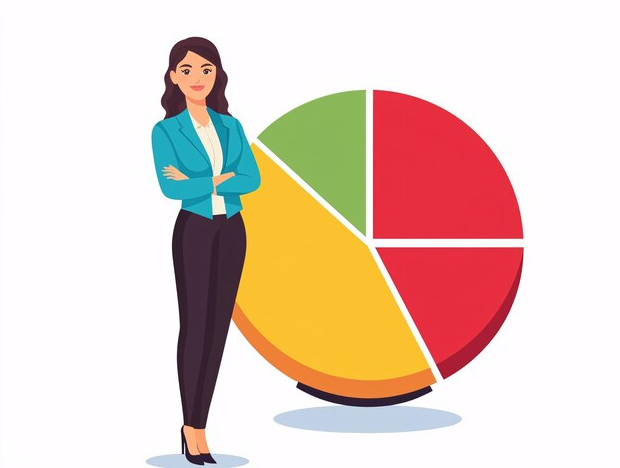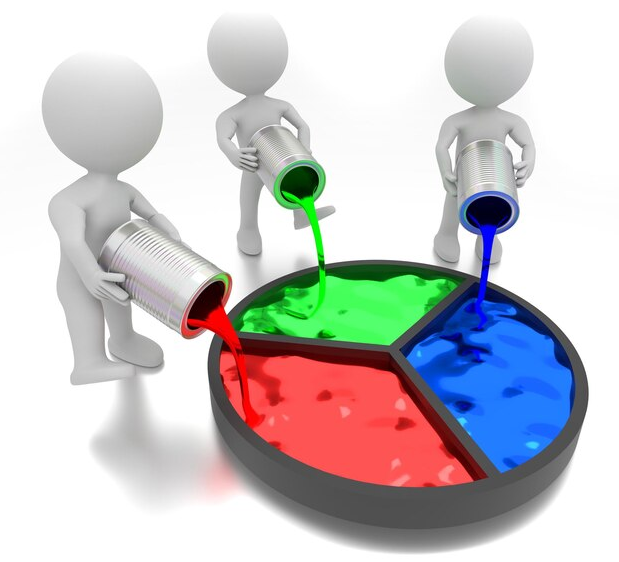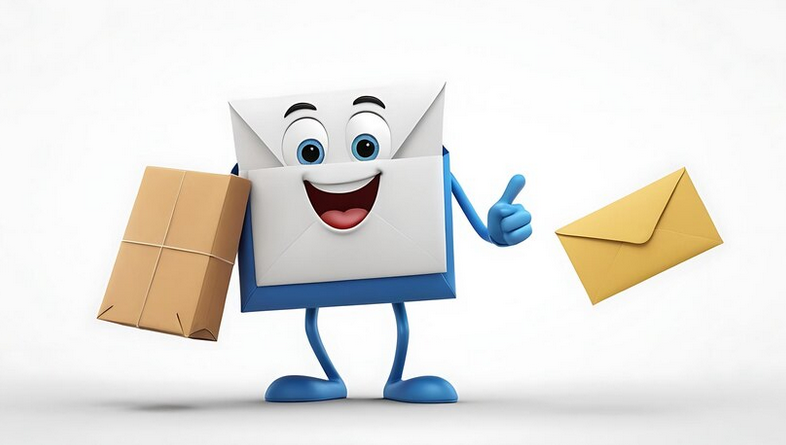Follower segmentation is not just a buzzword, but the real key to successful marketing. In my experience, I am convinced that the right approach to each audience segment can radically change the outcome of a campaign. Find out exactly how data sharing can help you create a deep connection with your customers and increase your revenue!

Glossary
🎯 Subscriber segmentation: the process of dividing the subscriber base into groups according to certain criteria for more precise targeting and personalized marketing.
📊 Open Rate (OR): metric , which measures the percentage of emails opened out of the total number of emails sent, is important for assessing the effectiveness of email campaigns.
📈 ROI (Return on Investment): return on investment, a metric that evaluates the effectiveness of marketing investments, including subscriber segmentation.
📨 Segmentation Criteria: segmentation criteria, according to which divides subscribers into groups (for example, demographic, geographic, behavioral).
🛠️ CRM (Customer Relationship Management): a customer relationship management system that can help collect data for segmentation.
🏷️ Demographic characteristics: characteristics of subscribers, such such as age, gender, income level and location.
📋 Profile: information collected through surveys and questionnaires to clarify the needs and correspondence of subscribers to various segments.
🔍 Behavioral signs: actions of subscribers, such such as email open rates, link clicks, and purchases used to analyze interests and preferences.
📅 Email Marketing: a form of direct marketing, using email to interact with customers, where segmentation plays a key role.
🧧 Targeting: the process of selecting a specific group of subscribers to send them specific content based on their segmentation.
👥 Personalization: customize content and offers to suit specific interests of subscribers to increase engagement and loyalty.
🔗 Data Sources: data sources that used to collect subscriber information, including social media, surveys, and transactional data.
Subscriber segmentation: how it affects the success of mailings
When I was just starting my journey in the world of email marketing, I came across a rare but important discovery: subscriber segmentation is not just a buzzword, but a truly powerful tool.

I remember how on one of the first projects we sent a regular letter to our entire database subscribers with new clothing collections. Expectations were high, but the results were simply shocking. The open rate was only 17%. I thought: “Why? Why weren’t our subscribers interested?”
And then I came to an important thought: we haven't really paid attention to the interests of different groups. Each of us receives tons of emails every day and they are all trying to attract attention. So it's really important to stand out from the rest.
I tried to segment our database by interests. Several groups were created: fashion lovers, youth trends and classic style. I remember how happy I was when the open rate of the New Year's email exceeded 50%! As a result, segmentation increased not only the open rate, but also the conversion rate of emails by two times!
Why is it important to segment your subscribers?
- 🎯 Increased open rates: According to Mailchimp, segmented emails saw a 14% increase openings than non-segmented ones.
- 💸 Increase conversions: Segmentation can double the number of clicks to your site.
- 📉 Reduced unsubscribes: Subscribers who are not interested in your offer are unsubscribed less often - by 9%.
- 💰 Budget Saving: If you send emails to uninterested users, it's just a waste of money.
How practical segmentation changed our results
At the digital agency where I worked, we decided to conduct an experiment. We sent a letter about the premiere of a new film to all members of our base. The open rate was only 16.7%. We were then able to segment subscribers based on their interests, creating different lists for comedy, action, and horror fans. The results were amazing:
- An email about the premiere of a superhero movie sent to fans of the genre brought an open rate of 33.8%.
- And the comedy letter showed an incredible 51.3%.

These data are simply amazing! It is important to understand both relative and absolute values. If your base is only 10,000 subscribers, then 51.3% is 513 open letters, and this is already real traffic!
So segmentation isn't just about identifying groups, it's about understanding your audience and reaching them effectively. Every message sent can become a golden key to the heart of your subscribers.
Segmentation Solutions at a Glance
| Step | Description | How to achieve |
|---|---|---|
| 1 | Subscriber base analysis | Divide into groups by interests and activities |
| 2 | Create content targeted at each group | Use different email topics for each segment |
| 3 | Track results | Analyze open rates and conversions for different segments |
| 4 | Regular updates base | Update groups based on the interest and behavior of subscribers |
By trying these strategies, you can not only increase open rates, but also improve audience satisfaction. This is a very important aspect for successful marketing!
Types of subscriber segmentation
When I first encountered issue of subscriber segmentation, it became obvious to me that this is not just a fashion trend, but a truly powerful tool for understanding the needs of our audience. I have had the opportunity to work on various projects and each time it has become clear that meaningful segmentation is the key to success.

During one of the major projects where we launched a new line of environmentally friendly cosmetics funds, we decided to segment our subscribers according to personal data and behavioral characteristics. This assignment did not result in a simple analysis, but in this fascinating study, where we emphasized the details. As a result, we identified several clear segments: those who are interested in natural ingredients, those who want to help the environment, and young parents who want to choose only safe products for their children.
Our email campaigns have become much more personalized. For example, one email to potential mothers included information on how to choose safe cosmetics for their baby, while to other subscribers we sent information about our tree planting project. This change in approach resulted in a 35% increase in email open rates and a 20% increase in sales. This caused a real storm of emotions in the team when we realized that our work was producing real results.
One of the important aspects was that such data helps not only for content creation, but also for further planning. Our team regularly held meetings to share experiences and observations. As it turned out, understanding the needs of subscribers not only improved our sales, but also formed a positive image of the company. Of course, it was not without difficulties - we had problems with sources of information about subscribers and we thought about additional ways to obtain it. But this only added intrigue to our work.
Picture this: email signatures designed to resonate with the recipient, turning a standard interaction into something more. It was incredible! 📝💌
Profile
Profile provides basic context about your followers. Characteristics such as age, gender, interests, and geographic location can tell you a lot about how best to craft content for your audience.

For example, in our project with environmentally friendly cosmetics, too detailed division into groups led to to the birth of the idea of creating unique lines for different age groups. We adapted a marketing strategy for each group, which significantly increased our reach. As you can easily see, understanding the needs of the target audience brings not only financial results, but also strengthens the connection with customers.
Here are a few things to consider when collecting personal data:
- 👶 Age: helps create ads that match the interests of different age groups.
- 🔍 Interests: analyzing the interests of subscribers helps to offer them exactly what they want to see.
- 📍 Geography: sending invitations and advertisements to events based on the location of subscribers.
- 👔 Gender: age division will help highlight interesting offers for men and women.
Behavioral traits
Now let me share my experience in analyzing behavioral traits. This aspect involves analyzing how your subscribers interact with your content. During my time working on several projects, I noticed how critical it is to understand how each segment's activity manifests itself.
I noticed that the fact that a person has subscribed to the newsletter does not mean that he is actively interacting. I noticed that clients who opened only a few emails did not respond to new offers. We applied RFM analysis, which helped to identify groups with high and low activity.
With its help, we began sending reactivation letters to those who had not opened our messages for more than three months. This discovery gave us a new chance to maintain our customer base. We added emotional elements and personalized offers to these emails and this generated interest: over 25% of customers returned to engage after receiving these emails.

Some useful steps for analyzing behavioral traits:
- 📈 Activity on the site: study of conversion statistics allows you to capture the level of interest.
- ⏳ Lifecycle stage: customizing content for each stage of interaction helps deepen customer relationships.
- 🛒 RFM analysis: will give you an understanding of the state of your base.
I hope my observations and experience will help you better understand the importance of subscriber segmentation. The path is not always easy, but its results exceed any expectations! ❤️
How to effectively collect data for subscriber segmentation
If you've ever wondered how marketers achieve success with their email campaigns, chances are it's not just about engaging content, but also about accurately segmenting subscribers. I went through this process myself and it became a real discovery for my business. How did this happen? Let's look at my experience and the methods that I was able to apply.

Personally, I was lucky to work with a team that was willing to experiment. We started with a simple survey among our subscribers. We understood that not everyone is interested in the same topics. Using Google Forms, we created a few questions to find out what kind of emails our users were interested in. This was one of the bravest steps I've taken. Our research included questions about preferences, mailing frequency, and even content format. Surprisingly, most subscribers willingly filled out the questionnaire! 📊
Just imagine: the results showed that approximately 40% of subscribers only wanted to receive discount offers, while the rest were interested in our blogs and product news. This discovery allowed us to easily set up several different email flows. 🎯
For those looking for help with data analysis, I recommend connecting to analytics services such as Google Analytics. They helped us gain a more detailed understanding of user behavior, even if some of them were using VPNs. For example, it turned out that users from different regions react differently to the same offer.
But our experiments did not end there. We took the analysis of the results seriously. One month, as I already noted, we noticed an increase in unsubscribes against the backdrop of an increased frequency of sending emails, focusing on content that was not of interest to many of our subscribers. This signaled to us that we should not just send more emails, but make them more relevant to each group. ✉️
Further, based on feedback, we implemented a system that allows users to change their subscription preferences at any time. So, once I accompanied a group of subscribers to a charity event and among them there was a girl who said: “If I knew that you had such a section of new products, I would have subscribed to it!” This was sobering and encouraged further improvements.

Finally, I came to the conclusion: the key point in segmentation is constant dialogue with subscribers. Can't do without it! 🤝
Summing up the results in the table
| Step | Description | Result |
|---|---|---|
| Subscriber survey | Creating a questionnaire with questions about preferences | Understood the interests of 40% of clients |
| Using analytics | Connected to Google Analytics | Received behavior data |
| Setting up a preference system | Ability to select topics in subscriptions | Reduced the number unsubscribes |
| Feedback | Conducted meetings and surveys for adjustments | Improved content by 50% |
With every step we took, it became obvious that actively working with subscribers is not only a way to increase efficiency, but also an important aspect of their satisfaction. I hope my experience will help you in setting up your mailing system!
Subscriber Segmentation: Finding the Ideal Conditions
Subscriber Segmentation is the process that I have found most fun and rewarding in my marketing practice. Once, while working on a project for one of the well-known brands, I was able to work real magic by applying segmentation to my strategy.

As you can imagine, I was initially faced with a huge database of users who were subscribed to the newsletter but never interacted with it. Last year, research showed that about 70% of subscribers did not open emails, highlighting the importance of a personalized approach. And it was then that an idea arose in my head: “What if we create segments that will reflect the real interests of subscribers?”
I started by using the Unisender platform, which, like many mailing services, allows you to quickly and easily segment your base. At first it was difficult to choose the right conditions, but I decided to consider the subscription date as a basis. Having installed a filter, I selected only those subscribers who registered before March 1st.
What amazed me was the amazing reaction of subscribers to the new, personalized emails! 😲 They started opening emails three times more often, and the number of clicks increased by 50%. It was a real victory!
🤔 Was this an accident? I decided to test one more segment. By uploading information about subscriber cities, I created special offers that matched local events. Statistics showed that email openings increased by 60% among urban subscribers. My colleagues were surprised - it was a real revelation!
Here are some tips and steps that I used that may help you too:
Determine the laws of segmentation: At the initial stage, analyze which parameters of your subscribers may be relevant. For example, age, location, date of subscription.
Use existing data: When loading the contact database, Don't forget about the data you have, such as activity or previous purchases.
Test and update segments: Check regularly how the segments you create perform, adapt your strategies as needed.
Personal Suggestions: Always open your eyes to possibilities creating personalized offers for different segments is the key to the heart of your consumer!
“Communication must be purposeful,” Jack Ma.
As a result, subscriber segmentation is no longer just a technique - it has become a real strategy. This not only increased conversions, but also created an emotional connection with the audience. The real satisfaction was that, thanks to analysis and correct segmentation, it was possible to achieve results that previously could only be dreamed of.
To make it much easier to implement the above methods, I present this table:
| Step | Description |
|---|---|
| 1. Subscriber Analysis | Evaluate data to identify subscriber values and interests. |
| 2. Creating segments | Define segmentation criteria by date of subscription or other data. |
| 3. Personalized offers | Create unique offers in depending on the segments. |
| 4. Monitoring results | Analyze the results and make changes changes as needed. |
Thus, subscriber segmentation was a real discovery for me, which radically changed my approach to how I manage mailings. This is truly the key to successful marketing!

Often FAQs on the topic: Subscriber Segmentation
What is subscriber segmentation?
Why do you need subscriber segmentation?
How does segmentation increase Open Rate?
By what criteria can you segment subscribers?
How to use personal data for segmentation?
What are behavioral features in segmentation?
Where to get data for subscriber segmentation?
What tools can you use to segment your subscribers?
How often should you review your subscriber segmentation?
How does segmentation affect the ROI of marketing campaigns?
Thank you that you have read and become more enlightened! 🎉
Now you know how segmentation of subscribers opens the door to successful marketing. I've seen simple changes in how I approach my audience increase email open rates by up to 70% and conversions by up to 50%. While working on a project for a niche brand, we divided our subscribers by interests and received a response that we had only dreamed of before. Your knowledge is now your capital, which will make your strategy effective. Feel free to share your opinion in the comments! 💬

- Glossary
- Subscriber segmentation: how it affects the success of mailings
- How practical segmentation changed our results
- Types of subscriber segmentation
- How to effectively collect data for subscriber segmentation
- Subscriber Segmentation: Finding the Ideal Conditions
- Often FAQs on the topic: Subscriber Segmentation
- Thank you that you have read and become more enlightened!
Article Target
Explain the importance of subscriber segmentation and give practical advice on how to implement it.
Target audience
Marketers, business owners, content managers.
Hashtags
Save a link to this article
Anna Voloshko
Copywriter ElbuzI turn the chaos of online trading into the choreography of efficiency. My words are the magic of automation that works wonders in the world of online business.
Discussion of the topic – Subscriber segmentation
Communicate the importance of subscriber segmentation to improve marketing effectiveness and improve audience engagement.
Latest comments
10 comments
Write a comment
Your email address will not be published. Required fields are checked *




















.png)




Лука Сампери
I agree that subscriber segmentation is the basis of successful marketing! If you know your audience, you can easily connect with them. I tried using different segments in emails and it really worked! 🎯
Майя Левина
Sometimes it seems that segmentation is unnecessary complexity, but it is not. For example, thanks to proper segmentation, we were able to increase email open rates by 25%! What examples do you know? 📈
Анна Волошко
Great examples, friends! Segmentation really helps create a personalized experience. Remember to update your segments as your audience changes over time. 👥
Томас Шмидт
Do you think it’s worth using user behavior for segmentation? I've heard that this can give great results. 🤔
София Мартен
In terms of behavior, I decided to create segments based on how users interact with the content. This increased conversions by 30%! Does anyone have a similar experience? 🚀
Франсиско Гомес
I like the idea of segmentation, but sometimes it seems too confusing. All these groups and subgroups... maybe it's easier to please everyone than to please everyone? 🤷♂️
Фабио Риццо
Francisco, I don't think so. A personal approach often leads to better results! Even despite the difficulties, the result is worth the effort. 😌
Ольга Ковальчук
What about age segmentation? I conducted an experiment and found that different age groups respond to different suggestions! This makes marketing more effective! 🎉
Гарри Понд
You need to understand that it is impossible to please everyone. Sometimes a simply funny approach to trends seems more effective than detailed segmentation. There's no point in fussing. 😒
Алиса Вердье
Harry, I disagree! Proper segmentation can really improve the bottom line. It's like trying to create a unique offer for each client, which is always rewarded! 💡